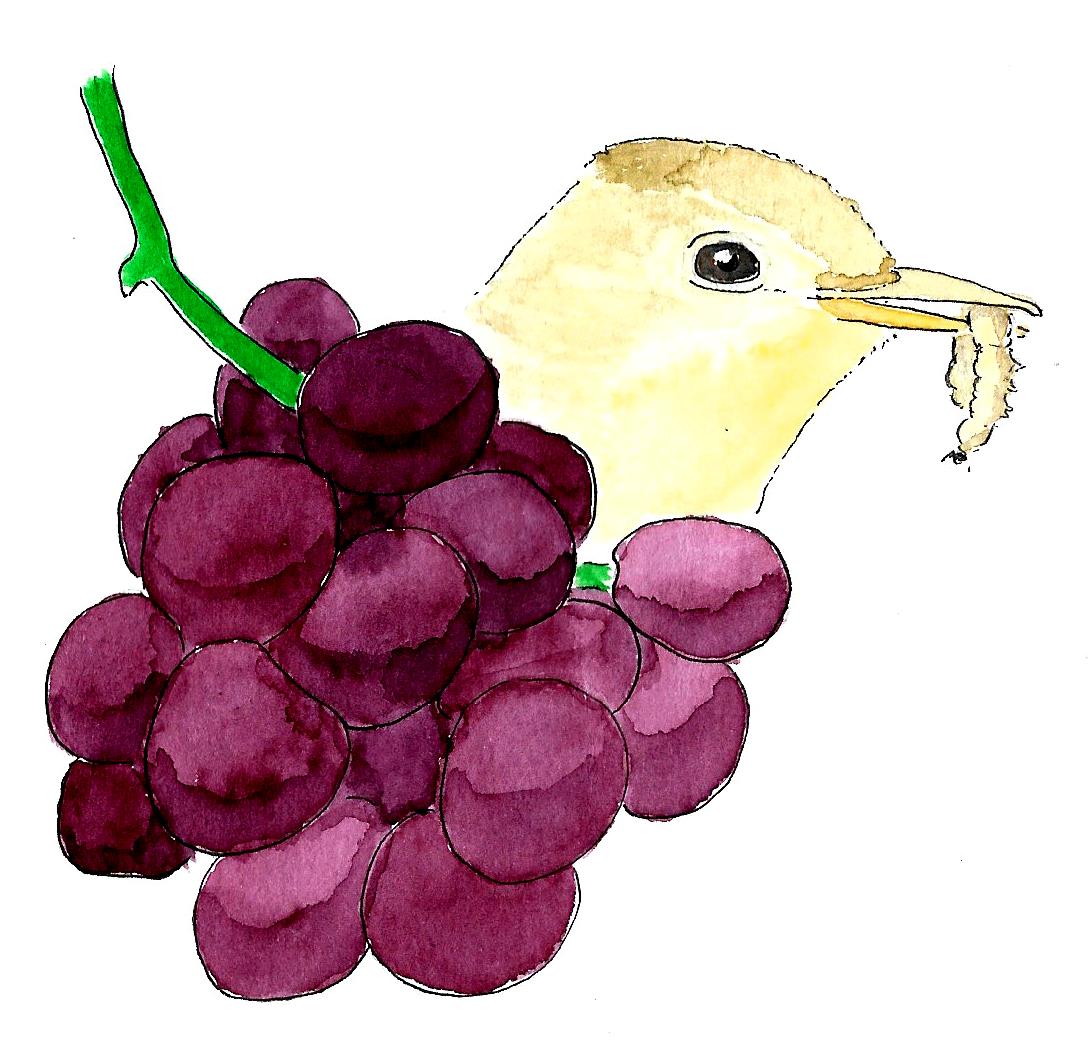Vineyard characteristics influence the potential of birds as allies in pest control
Smaller vineyards surrounded by heterogeneous landscapes are potentially more protected from insect pests because they promote greater functional diversity of birds. Landscape heterogeneity around vineyards can be achieved by conserving riparian habitats, hedgerows, trees, stone walls, and rural buildings. This structural complexity benefits bird communities by providing food, shelter and nesting sites. Functional diversity indices are indicators of bird community composition that consider not only what species are present but also their traits (e.g. body mass, foraging strategy, foraging strata, and diet). Thus, functional diversity may reflect potential biocontrol services provided by birds.
Birds have a large potential for pest control, because many species are insectivorous, they have many functional roles (e.g. variety of foraging habitats and behaviour), and they are common in most habitats. Moreover, there is evidence suggesting that birds provide a biocontrol service in vineyards and other crops. Vineyards are intensively managed landscapes, and they are susceptible to several diseases and pests responsible for considerable economic losses. Several arthropod insect species may reach the pest threshold in vineyards, affecting mostly leaves or grapes.
Our main objective was to use functional diversity indices to assess the influence of vineyard characteristics on the potential biocontrol services provided by insectivorous birds. Our hypothesis was that the neighbouring semi-natural habitats should increase the functional diversity of insectivorous birds in vineyards, which in turn would increase the potential biocontrol services provided. We sampled bird communities using a point count method in 31 vineyard plots located in Évora district (Alentejo, South Portugal). All vineyards represented different management practices and landscape contexts. Functional diversity of birds was higher in smaller vineyard plots surrounded by a more diverse landscape with trees, than in medium size vineyards mostly surrounded by agricultural habitats, and in larger vineyards often surrounded by other vineyard plots. Thus, smaller vineyard plots in more heterogeneous landscapes with neighboring woodlands seem to have greater functional diversity of birds, which should mean a higher potential of biocontrol services provided by insectivorous birds.
Wine and grape production play an important role in the regional economy of several countries. Birds can be valuable allies in the so called “vinecology”, which integrates ecological and viticultural practices, providing a response to the consumers’ concern for wine quality and the environmental sustainability.

